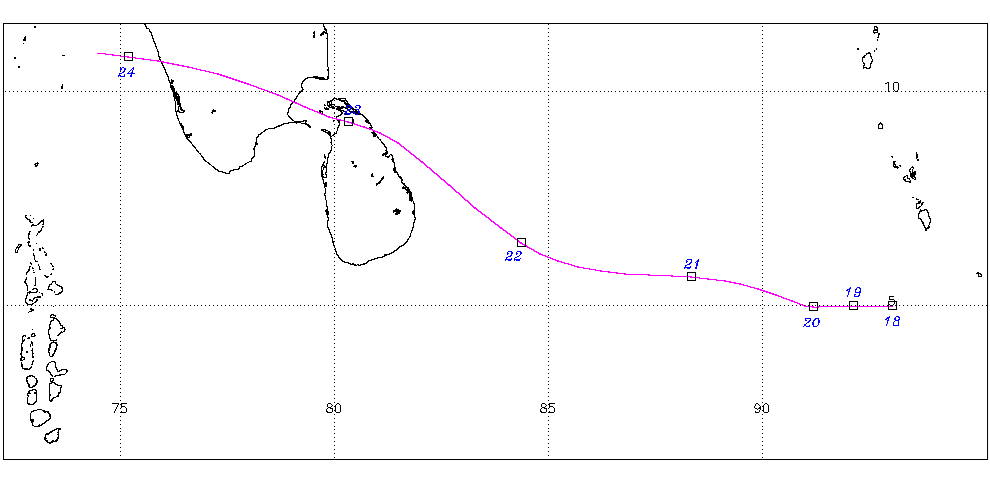

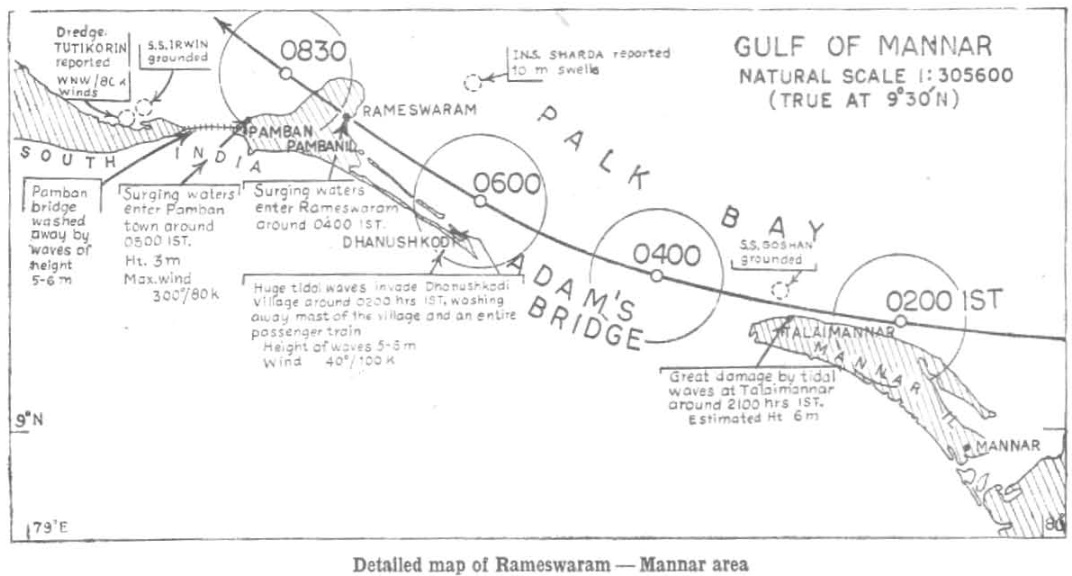
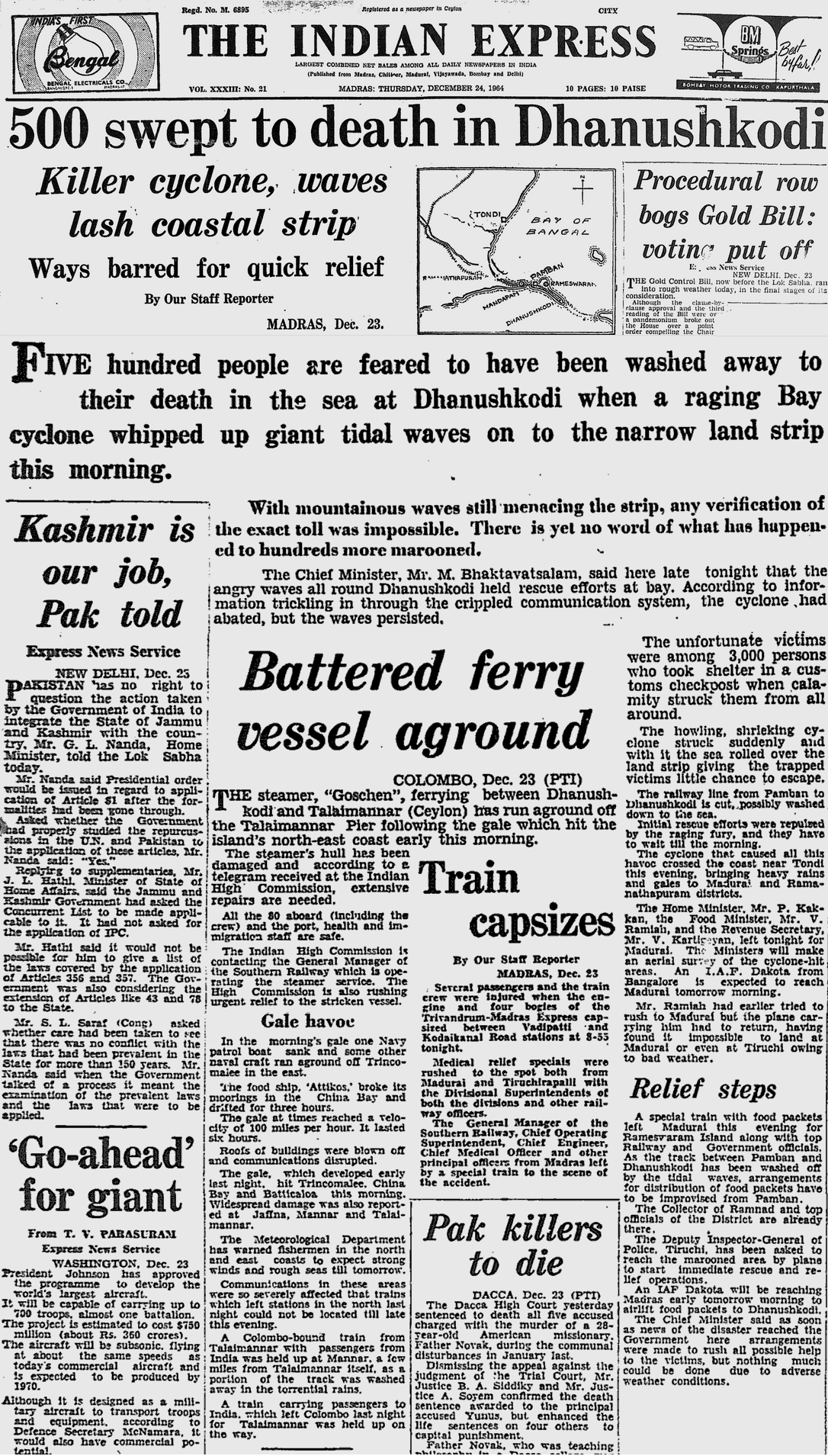
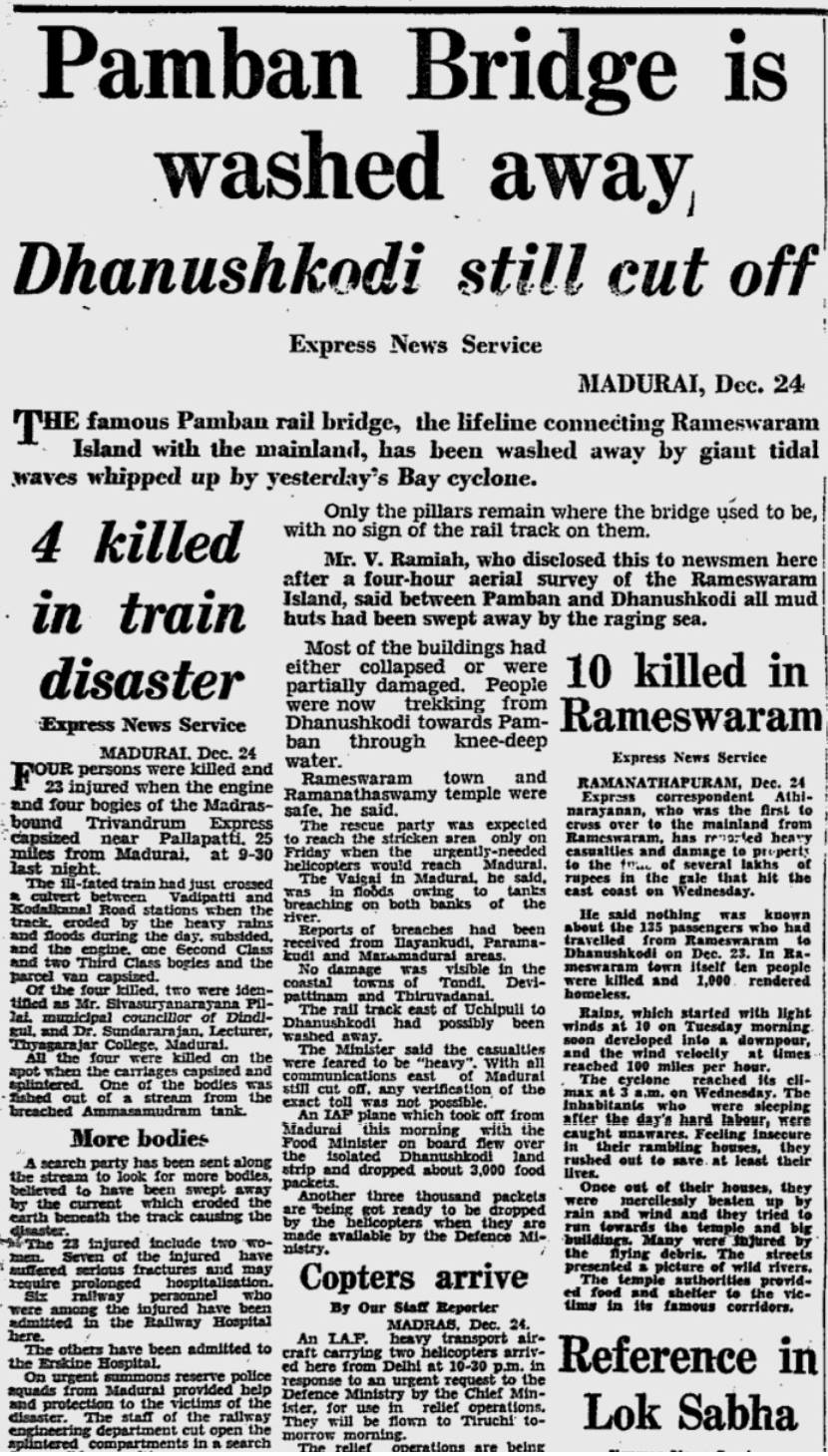
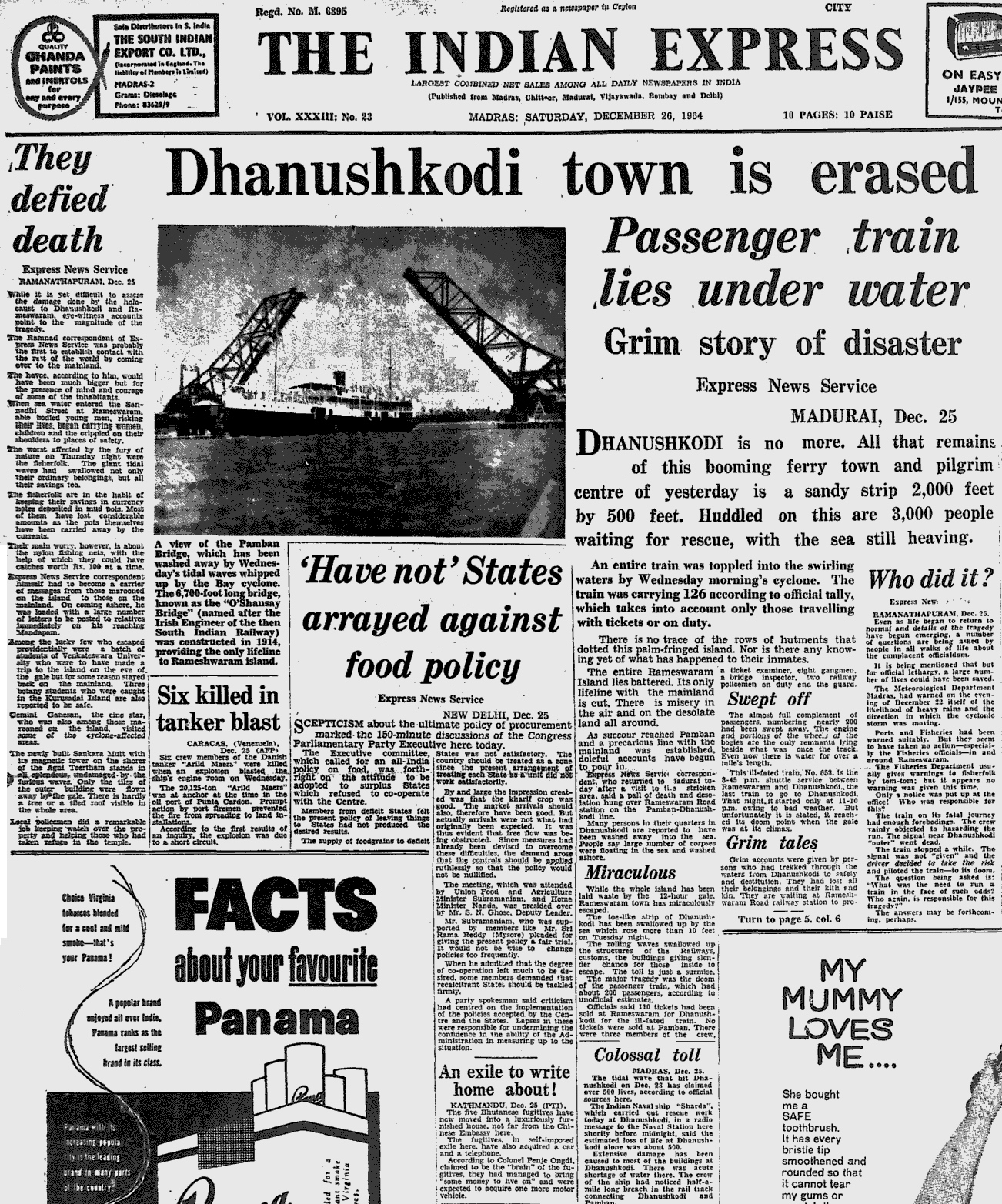
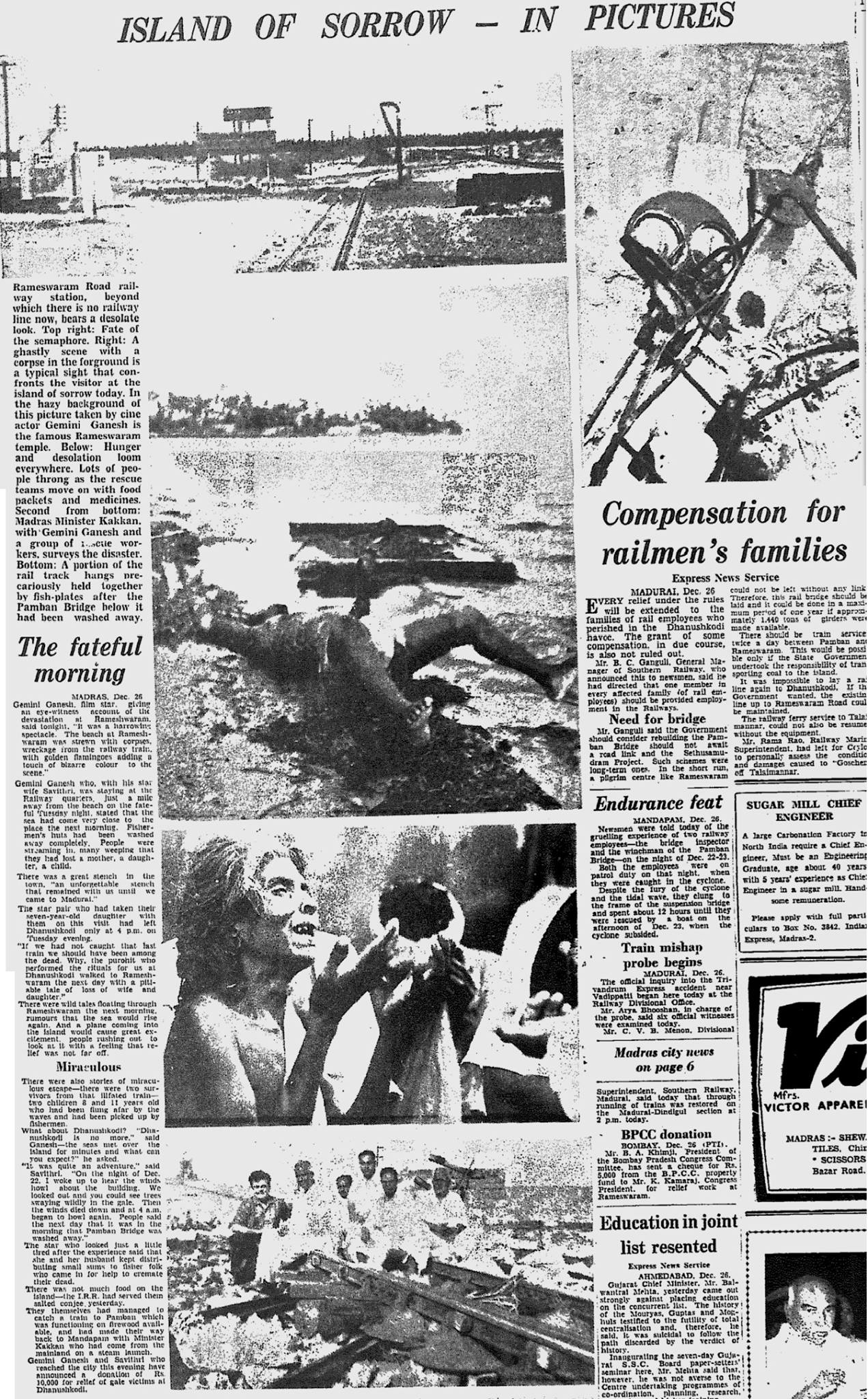
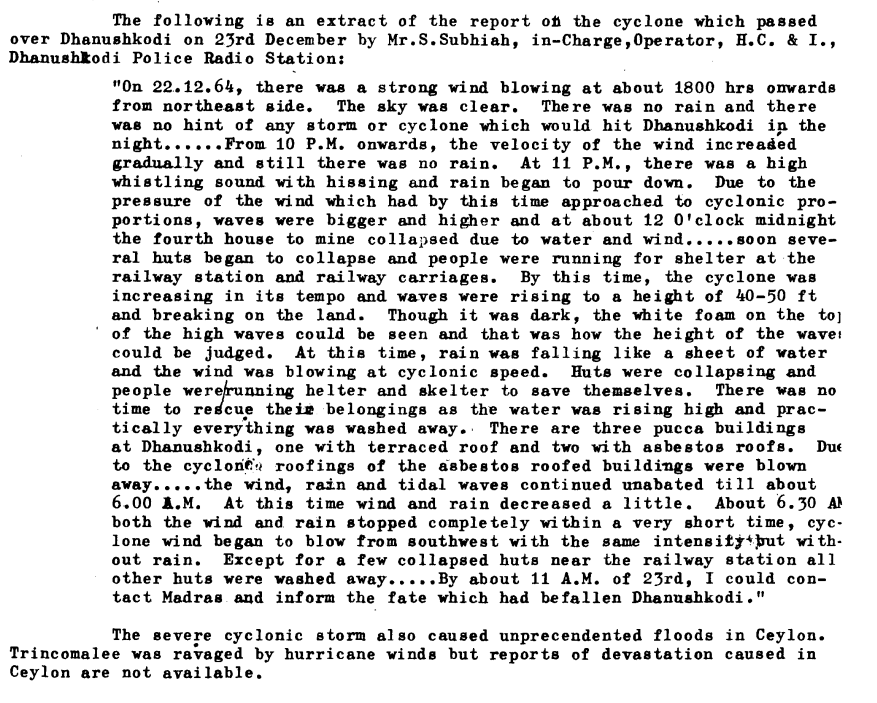








Clouds went slightly north & south of Chennai and down south Tuty and Nellai district gets good rains (2nd one of the season). Chengalpet and Cuddalore districts too gets very good rains (1st one of the season). Still Chennai region got decent rainfall ending today morning. Not the heavy ones we expected.
Chennai convergence has shifted south and yaru kannu vechakangalo only Chennai only Chennai, we missed what would been a very good spell. For areas like Cuddalore and Delta, this is the 1st spell of Monsoon rains after onset, they deserve it, Chennai has been lucky to many spells compared other coastal giants and have crossed 400 mm in this monsoon, while other stations are yet to cross even 150 mm rainfall in Delta / Cuddalore / Pondy.
Palayamkottai and Tuty town gets heavy rain – Palyamkottai got its highest rainfall of the year with 63 mm while Tuty has got 53 mm.


Today
Today the easterlies will go inland, so many interior parts of Tamil Nadu like Dindigul, Madurai, Virudhunagar, Theni, Thoothukudi, Ramanathapuram, Nellai, Coimbatore, Tiruppur, Erode, Nilgiris and Kanyakumari will get good rains. Delta belt, Cuddalore, Tvmalai, Villupuram, Kallakuruchi, Salem will see rains in day time. Chennai will see isolated spells with sun shining bright at times.
Heavy rains possible in western districts such as Nilgiris, Tiruppur, Thoothukudi, Tirunelveli, Dindigul, Virudhungar and Theni districts at some places.
The next key date for Chennai is 15-16th, November. Clash of westerly trough and easterlies happening with ridge in between. Lets look forward to
Diwali day
For Chennai the Diwali day might start with with some moderate rains in the morning, but as we go into day, rains will clear noon, evening and early nights will be clear for celebration of Diwali. Then going into mid-nights and early morning of 15th, the rains will pick up.
15-16th November – Easterlies clash with Westerly Trough
Coming to 15-16th November, the entire TN coast from Chennai to Delta will have chance for heavy rains, these two days needs watch as always these kind of clashes have produced surprise rainfall for the State. More on that we can see later.

Chennai and Surrounding regions rainfall in mm on 13.11.2020
DGP Office (Mylapore) – 57
Mahabalipuram – 57
Tirukalakundram – 57
Chennai Collectorate (Parrys) – 55
Ennore – 54
Anna University (Guindy) – 47
Redhills – 45
Perambur – 43
Aynavaram – 43
Ponneri – 43
Nungambakkam – 41
Alandur – 40
Tondairpet – 40
Meenambakkam – 39
Chengalpattu – 38
Cheyyur – 37
Ambattur – 36
Madurantagam – 35
MGR Nagar (KK Nagar) – 33
Tambaram – 30
Gumidpoondi – 29
Cholavaram – 20
Kancheepuram – 16
Poonamalle – 15
Thamaraipakkam – 15
Chembarabakkam – 12
Poondi Lake – 10
Uthieramerur – 10
Salem
—–
Kariyakovil Dam – 85
Karumandurai – 70
Thammpatti – 38
Attur – 34
Yethapur – 27
Anaimaduvu Dam – 15
Danishpet – 14
Yercaud – 12
Veeraganoor – 10
Tirunelveli
———-
Palyamkottai – 63
Papanasam Dam – 42
Servalar – 34
Lower Papanasam – 30
Ambasamudaram – 29
Cheranmahadevi – 26
Manimuthar – 25
Nanguneri – 20
Tirunelveli – 11
Thoothukudi
———–
Srivaikundam – 57
Thoothukudi Port – 53
Thoothukudi AWS – 46
Tiruchendur – 18
Maniyachi – 18
Thoothukudi Town – 21
Kayalpattinam – 11
Kadambur – 10
Kayathar – 10
Cuddalore
———-
Cuddalore – 52
Vanamadevi – 26
Chidambaram AWS – 21
Kudithangi – 20
Annamalai Nagar – 19
Parangipettai – 18
Kurinjipadi – 10
Kattumannarkoil – 10
Kallakuruchi
———-
Manalurpet – 35
Sankarapuram – 25
Kachirayapalayam – 18
Madampoondi – 18
Marakkanam – 15
Tirupalapandal – 15
Moorarpalayam – 14
Keelpadi – 12
Tirukkoilur – 10
Moongilthuraipattu – 10
Nagapattinam
————
Sirkali – 38
Vedaranyam – 38
Kollidam – 27
Thirupoondi – 26
Mayiladuthurai – 26
Thalanayar – 16
Manalmedu – 16
Nilgiris
——-
Billimalai – 30
Coonoor – 15
Coonoor PTO – 15
Kodanad – 13
Kotagiri – 12
Chamraj – 10
Kinnikorai – 10
Alakkarai – 10
Adar – 10
Tiruvannamalai
————–
Vandavasi – 28
Vembakkam – 26
Polur – 23
Arani – 10
Chetpet – 10
Pudukottai
———–
Manamelkudi – 22
Malaiyur – 11
Karambakudi – 10
Villupuram
——–
Vanur – 20
Anandhapuram – 18
Soorapattu – 16
Mugaiyur – 10
Kanyakumari
———–
Upper Kodayar – 40
Kanyakumari – 18
Mylaudy – 12
Kannimar – 10
Pechiparai – 10
Perunchani – 10
Chittar I – 10
Puthan Dam – 10
Lower Kodayar – 10
Others
——
Karaikkal, Karaikkal – 28
Thiruthuraipoondi, Tiruvarur – 14
Manamadurai, Sivagangai – 11
Palani, Dindigul – 11
Avinashi, Tiruppur – 10
Oddenchatram, Dindigul – 10
Madukkur, Thanjavur – 10
Adiramapattinam – Thanjavur – 10
Wish you all a Happy and Safe Diwali.
1. Performance of the Monsoon till date.
North and North Interior Tamil Nadu – Tirupattur, Chennai, Kancheepuram, Tiruvannamalai, Ranipet have got good rains while Chengalpet, Tiruvallur, Villupuram and Vellore have got normal rains.
South Tamil Nadu – Virudhunagar, Sivaganga and Madurai have got good rains while Theni, Tirunelveli and Thoothukudi have got normal rains.
West Tamil Nadu – Only Tiruppur has rocked this monsoon.
All other districts than the ones mentioned above have got less rains in this NEM, Delta, West and South TN district need more rains than the northern counterparts. The upcoming Depression / Marginal intensity Cyclone will reduce the deficit of many of the below normal districts. Lets see the table around 10th December again.

Very rarely we will see the giants of monsoon Delta like this when North TN has rocked. Nivar did not give much rains to Delta compared to North TN districts. The upcoming system should change all this in delta and reduce the deficit a bit and not fully.
2. Expected Track of upcoming System
The present low will become Depression and further intensify into Deep Depression and might interact with the rugged Sri Lanka landmass filled with mountains, go through Gulf of Mannar then go via Kanyakumari sea and finally into Arabian Sea. As you can see some of the members also show the probability for the system to go via land through Thoothukud-Tirunelveli-Kanyakumari and South Kerala landmass.

3. Rains for Entire Tamil Nadu
Heavy Rains – Southern districts such as Theni, Kanyakumari, Thenkasi, Virudhunagar, Thoothukudi, Tirunelveli and Ramanathapuram districts are areas we need to watch in the next rains. Coonoor, Kodaikanal, Papanasam and Manjolai areas needs closer watch for heavy rains. Delta districts (Nagai, Thanjavur, Tiruvarur), Pudukottai and Sivangangai will also get heavy rains from 2nd – 5th December.
Interiors districts – As the system is expected to move from Bay of Bengal via GoM/Comorin Sea to Arabian Sea the easterlies is pushed well inland. So interiors districts such as Madurai, Trichy, Dindigul too will get rains.
Western districts – Due to the above scenario similar to interior districts, western districts such as Nilgiris, Coimbatore and Tiruppur will also get good rains for a day or two, though they are not capture by the models. 3-6 th December will the days for chance of rains.
North TN and KTCC (Chennai) – From 2nd December we will get rains from northern convergence when the low is in Gulf of Mannar / Comorin Sea / Sri Lanka. When it moves to Arabian Sea, we get rains from the pull effect bands . So Chennai will get decent rains but unlike previous widespread heavy spells, this time it wont be widespread heavy spells.
Other districts will get some moderate rains for a day or two out of the total 5 days (2-6 December)
Kerala – Trivanadrum, Pathanamthitta, Kollam and Alapuzha in South Kerala will fall in the path of heavy rains. Trivandrum and kollam in particular has chance of very very heavy rains. Trivandrum will also see gusty winds of 50 km/hr.
Sri Lanka – Jaffna and north east Sri Lanka will get heavy rains and infact as the Depression moves right through Sri Lanka entire Sri Lanka is in for massive rains. High chances for floods in some parts of the country.
4. Winds and Rough seas.
Very rarely we see strong cyclone come via Sri Lanka. So it will be a weak system maybe a Deep Depression or marginal cyclone. The rugged mountains in Sri Lanka will weaken the system a lot, So Winds will not be very strong like Gaja or Vardah or Thane. The maximum sustained speeds is expected around to be 50-60 km/hr in southern districts on 3rd, 4th, and on 5th December too, if the system stalls. Particularly – Ramanathapuram, Thoothukudi, Tirunelveli and Kanyakumari will face the winds, and little more in the areas close to the coast and the seas. Delta to Pudukottai will get moderate winds. The people in these places needs to be in safe buildings as even 60 km/hr winds can do lot of damages, as these places are not used to such winds. Rubber trees needs to be protected from such winds particularly in Kanyakumari district and Trivandrum. main Fishermen are strictly advised not to venture into South West Bay of Bengal, Gulf of Mannar, Kanyakumari Sea, Lakshwadeep Sea, Kerala Coast and nearby areas.

5. MJO and SST
MJO is in borderline P4 and SST of 28 C is not bad conditions for aiding a cyclone but it is not the explosive conditions of Nivar had and it is going as a weak Depression into Sri Lanka. Had it become strong in SW bay of bengal itself, it would have avoided Sri Lanka and moved W-NW. Since it is only a weak system, it is pushed by easterlies pure west by low to mid level steering winds. SST is not bad though it has cooled a lot. More ideal conditions of SST exist near Lakshwadeep sea. Best chance for it to become a good intensity cyclone is when the system moves from Comorin to Lakshwadeep sea, provided MJO support exist.


The post is put purely out of passion out of personal experience. For official updates, please follow the official weather agency.